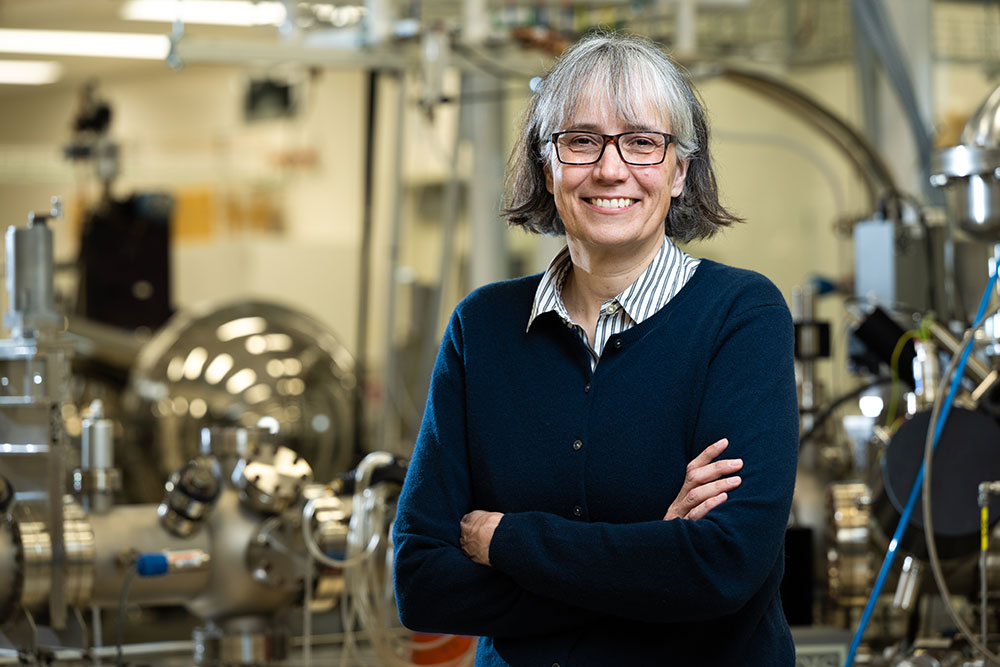Vuille, a professor in UAlbany’s Department of Atmospheric and Environmental Sciences, was awarded $526,171 last month to reconstruct the South American summer monsoon over the last millennium using climate data archives.
This month, he was awarded another $1.5 million to build a research network called ACCORD (Andean Climate Change: Observations, Research & Discovery), focused on improving our understanding of how climate change impacts the Andes Mountain region.
Vuille is leading both projects with support from Zhiqiang Lyu, a postdoctoral research associate at UAlbany.
“This new research funding will provide us with the tools needed to significantly advance our understanding of past and future climate change in one of the most vulnerable regions of the world that is already seeing significant impacts from global warming,” said Vuille. “I’m thankful to the NSF for their continued support of my work and the global effort to address climate change.”
“I am thrilled to be part of these groundbreaking projects,” added Lyu. “The opportunity to contribute to a deeper understanding of the South American summer monsoon and the impacts of climate change on the Andes region is incredibly rewarding. This research is crucial for developing strategies to mitigate the effects of global warming and protect vulnerable communities.”
South American Monsoon Reconstruction
The South American summer monsoon (SASM) is arguably the most important climate system in tropical South America, transporting moisture from the Atlantic Ocean to the continent during the austral summer, December through February.
While it is known that there is a year-to-year variation in the amount of SASM rainfall, more significant future changes remain unclear.
Vuille and Lyu are developing a new product that harnesses existing climate data records in South America, including the region’s two largest tree-ring and speleothem (cave sediment) archives, to reconstruct changes in the SASM over the last millennium.
Through a $5 million NSF PIRE (Partnerships for International Research and Education) grant, Vuille, along with UAlbany students, have traveled to South America to collect samples that have been added to both archives.
This new research will help scientists better understand past climate change in the region and support new climate models to project future monsoon rainfall.
“While the South American region’s paleoclimatic network has been steadily improving, the data has so far not been harnessed in a quantitative way that would allow putting current and future projected changes in a long-term context,” Vuille said. “This research will fill a big data void and improve our understanding of climate variability and change in the region.”
The NSF funding will also support a UAlbany graduate student who will help develop the monsoon reconstruction product over the next two years, along with open access visualization tools that can be used by scientists and for educational outreach.
Andean Climate Change
In the Andes region, the availability of mountain water is important for food security and energy production. Nearly half of the regional electricity comes from the hydropower potential of the Andean rivers.
However, rapid glacier retreat and reduced seasonal snowpack due to climate change are threatening the water supply. The increased frequency and intensity of extreme weather events, such as strong storms or long-lasting droughts, are further adding to the risk of water scarcity.
The goal of the ACCORD project is to create a network of multidisciplinary experts that can work together to project future climate scenarios for the Andes region and help implement proper adaptation measures.
Specifically, the network will provide a new Andean climate database, shared on an accessible platform, and use new climate model simulations to improve our understanding of Andean mountain circulation, analyze how the intensity and frequency of extreme events (droughts, storms) will change, and document how climate change will affect glaciers, snow cover and water availability going forward.
The results will be displayed using advanced visualization tools, making them easy to understand for policymakers and the public at large.
“Many networks are working on addressing climate change in the Andes, but they are not well connected,” Vuille said. “Through ACCORD, we plan to build the first multidisciplinary network of networks focused on this issue, producing scientific breakthroughs that have so far been hard to capture due to the lack of collaboration.”
While the focus of the network is on the Andes, its results will be relevant for other mountain areas, including in the United States. The network will also contribute to training the next generation of climate scientists, involving undergraduate and graduate students and early career researchers in all aspects.


